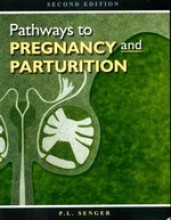Population Growth and Urbanization - City and Countryside Today
26 important questions on Population Growth and Urbanization - City and Countryside Today
Why does China have to manage the gravitation to towns and cities that comes along with modernization?
How is China's population distributed over the country?
What was the aim of the residential registration system which was introduced in 1953?
- Higher grades + faster learning
- Never study anything twice
- 100% sure, 100% understanding
What was the result of the residential registration system which was introduced in 1953?
When did the Great Leap Forward begin?
What was the result of the Great Leap Forward?
How did the government control the urban population after the crisis of the Great Leap Forward?
What did the government do during the Cultural Revolution with regard to migration?
What happened to the city middle-school graduates after the Cultural Revolution?
What was the result of the new economic reforms in the 1980s with regard to migration?
What is the consequence of the lossened migration controls?
Which factors have led to an increased life expectancy since the 1950s?
- Improvements in housing and income have positively impacted people's helath and nutrition.
- Improvement of mass education has had an indirect impact on reducing mortality. More children attend school.
- Improved health care facilities managed by the government.
Why did the collective health care system lose its financial base after the reforms of the 1980s?
Describe the rural health care as it is after the reforms of the 1980s.
Which factors have made cancer the leading cause of death in China?
Describe the urban health care as it is after the reforms of the 1980s.
What are the consequences of these new forms of health care?
What was the housing policy like under the PRC?
How did the government try to improve the urban housing conditions?
What are rural laborers?
In Europe and the US there are often long legal battles to acquire property for development projects. This is not the case in China, why not?
What are the advantages and disadvantages of the huge public development projects for which entire cities are even rebuilt?
What has been the official strategy of the government on future urbanization since 1980?
Why were small towns considered important by experts with regard to the stategy on future urbanization?
How is the actual strategy different from the official strategy of future urbanization in China?
Why is it difficult to come to grips with the problems related to urbanization?
The question on the page originate from the summary of the following study material:
- A unique study and practice tool
- Never study anything twice again
- Get the grades you hope for
- 100% sure, 100% understanding































